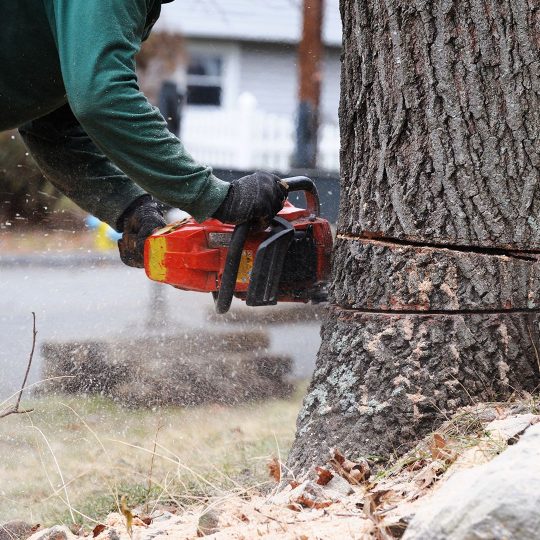The Cost of Tree Removal
Factors to Help Estimate the Size of a Project
Posted
May 4, 2017

Deciding to remove a tree can be both emotional and expensive—depending on your situation. There are several factors to consider while estimating the cost of tree removal. Then, there are other costs that may not be included in your initial estimate. So, when you receive an estimate from a tree removal service, be sure to ask exactly what you’re getting.
Basic Tree Removal Services
No matter what your situation is, there are some things that should be included in all tree removal projects:
- The tree must come down.
- The contractor makes the process easier by cutting the tree into more manageable pieces.
- The large tree pieces are hauled away.
Of course, you should confirm these three things will be done and how long the process may take. You may also want to keep pieces if you’re planning to use it for firewood or woodworking projects.
Additional Tree Removal Services
Once the tree is removed, there is still work that can be done, but it could come at an extra cost:
- Removal of tree limbs. The smaller pieces may not be included in the removal of the larger trunk. While the costs may not be that expensive, it’s still an added expense. You can also choose to have the limbs chipped, which is an even cheaper option.
- Stump removal. This is usually never included in the price of tree removal. Since different equipment is necessary to remove a stump, this part of the project is extra. Estimating the cost for this service is determined by the diameter of the stump. Smaller stumps are easier to remove. Removing a rotting stump should be cheaper than taking out a strong, solid one.
- Log splitting. If you’re looking for someone else to cut your firewood, it’s going to cost you extra.
Estimated Cost of Tree Removal by Type
The type of tree coming down will have a lot to do with the price you pay. Estimates are based on:
- Size. The larger the tree, the more work involved, and the more careful the removal process needs to be.
- Location. Trees close to a house or other structure takes more care to cut down. Ones in a more open area are easier to remove. If a tree has already fallen, removal is also typically easier, thus cheaper.
- Condition. A strong, healthy tree is harder to remove than a dead, dying, or rotting one. Also, a tree damaged by a storm takes more work to remove it and not create any additional damage to the workers or surroundings.
- Species. Removing a strong, tough wood, like oak, is more difficult that taking down a tree composed of softer wood.
While removing a tree can be a major expense—ranging anywhere from $150 to $1,500—it’s worth getting the job done right by professionals. There’s a lot that can go wrong during improper tree removal, especially if you’re looking to remove a very large tree. Let the pros at Elite Tree Care talk to you about the available tree removal services so you can leave all the heavy lifting in capable hands.

Download Your FREE Tree Removal Guide
Even dedicated DIYers should think twice before taking on the task of tree removal. Our guide will help you decide whether to hire a tree service and how to get the most value for your money.